Genre: RPG Developer: Advance Communication Company Publisher: Sega Ent. Players: 1 Released: 1991
Video games have always been a medium for taking weird, offbeat concepts and making them more accessible to a wider audience. It’s not uncommon to see obscure movies, shows, or books turned into a console or PC title. While fans of those properties are usually thrilled at the prospect of them assuming video game form, the goal of reaching more people doesn’t always happen. In some cases, the video game remains as obscure as the property on which it’s based.
The plot isn’t deep, but from what I can gather, it definitely fits the title. While on a space tour, the Funky Horror Band experiences a malfunction with their spaceship and crash land on Earth. For some reason, they also lose all their instruments. A young girl witnesses the crash and, after meeting the band, decides to assist them in retrieving their scattered equipment so they can continue their tour.
Wakusei Woodstock: Funky Horror Band (hereafter referred to as Funky Horror Band) on Mega CD) drew inspiration from the intriguing concept of the “Funky Horror Band,” a Japanese project by Victor Musical Industries that released a few albums between 1990 and 1992, but its execution leaves much to be desired. From the outset, the game’s shortcomings become apparent. Despite being Sega’s first release for Mega CD, where one would expect it would show off all the powers of the new (and expensive) add-on, Funky Horror Band fails to capitalize on the new platform’s capabilities in just about every way. Like many of the early Mega CD games, the lackluster integration of the CD-ROM hardware causes what should have been a standout game to fall short of expectations.
While the game’s premise holds promise, the execution leaves much to be desired. Hindered by a language barrier and sparse translation resources (even after so many years, few are available), players are left to navigate the game’s narrative largely in the dark, relying on guesswork to fill in the gaps. This lack of clarity kind of kills the overall experience, leaving players who aren’t fluent in Japanese feeling disconnected from the storyline. It really is a problem, as one of the areas where Funky Horror Band shines is in its parody of early 1990s pop music culture. References to musicians are sprinkled throughout the game, like enemies called “Bob Dullahan,” or chests named “Mimmick Jagger.” There’s even a dancing dragon boss called, “Hammer Dragon,” an obvious reference to rapper MC Hammer.
Granted, I can forgive the language issue. I’m sure Sega had no intention of releasing Funky Horror Band outside of Japan, but one would expect the quirky premise to at least come wrapped in the trappings of, you know, a decent game. In that regard, Funky Horror Band falls short once more by simply copy/pasting the mechanics of RPGs already established on less-powerful 8-bit platforms. The gameplay itself follows a traditional RPG format, reminiscent of early Dragon Quest titles. Players navigate a world map, explore towns and dungeons, and engage in turn-based battles with randomly encountered enemies. Some unique elements are introduced, such as attacking with melodies and encountering enemies with pun-inspired names, but these additions fail to elevate the gameplay beyond its generic RPG foundation. One of the most glaring flaws is Funky Horror Band’s restrictive party size, apparently capped at a mere two members (the band has six!). Coupled with the absence of experience points and reliance on equipment upgrades for character progression, the game feels too simplistic and lacking for what’s supposed to be the evolution of a genre. The limited party structure and lack of meaningful choices make the game seem too linear, and it doesn’t ever manage to get over that hump.
Sadly, the disappointment extends to the presentation. Funky Horror Band’s environments lack detail and sophistication, resembling amateur MS Paint creations rather than polished game landscapes. Battles fare no better, with plain black backgrounds and uninspired enemy designs further detracting from the game’s aesthetic appeal. While the animated sequences are nice, they fail to compensate for the overall lackluster visuals.
Even the game’s musical theme, touted as its most charming aspect, fails to deliver. Funky Horror Band’s soundtrack is mostly lackluster, relying on bleeps, blips, and uninspired samples to accompany gameplay, and the voiceovers suffer from muffled and low-quality audio. With all the power and flare that CD-ROM systems presented at the time, why wouldn’t the developers try to impress with the audio, if nothing else? Perhaps they lacked the infrastructure at the time, or maybe Sega didn’t want to budget such an expense, but that kind of detracts from the whole purpose of making CD-based games, doesn’t it?
As much as it pains me to say, Funky Horror Band falls short of its potential, delivering a lackluster RPG experience marred by uninspired gameplay, limited party mechanics, and subpar presentation. While the game’s musical theme and quirky elements show glimpses of promise, they ultimately fail to salvage an otherwise mediocre offering. I admit that my lack of Japanese language knowledge probably contributed to my impression, and perhaps most of the game’s charm is tied to dialogue and plot points that sadly escape those who aren’t fluent. Be that as it may, Funky Horror Band was released by Sega after Phantasy Star II and Shining in the Darkness, and I expected its first Mega CD RPG to be a much more impactful experience. There are much better RPGs to play on the Mega CD, in both English and Japanese, so time and money would be better spent on them. Funky Horror Band is an interesting footnote in the add-on’s history, nothing more.
SCORE: 4 out of 10

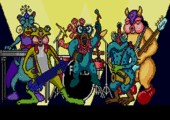
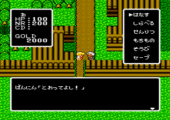
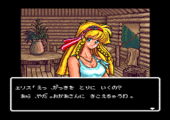
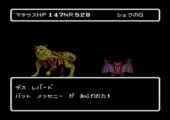
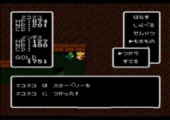
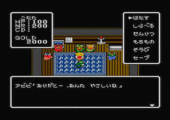
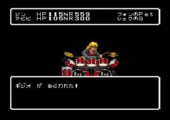
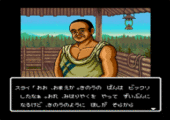
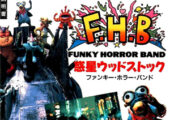
Recent Comments